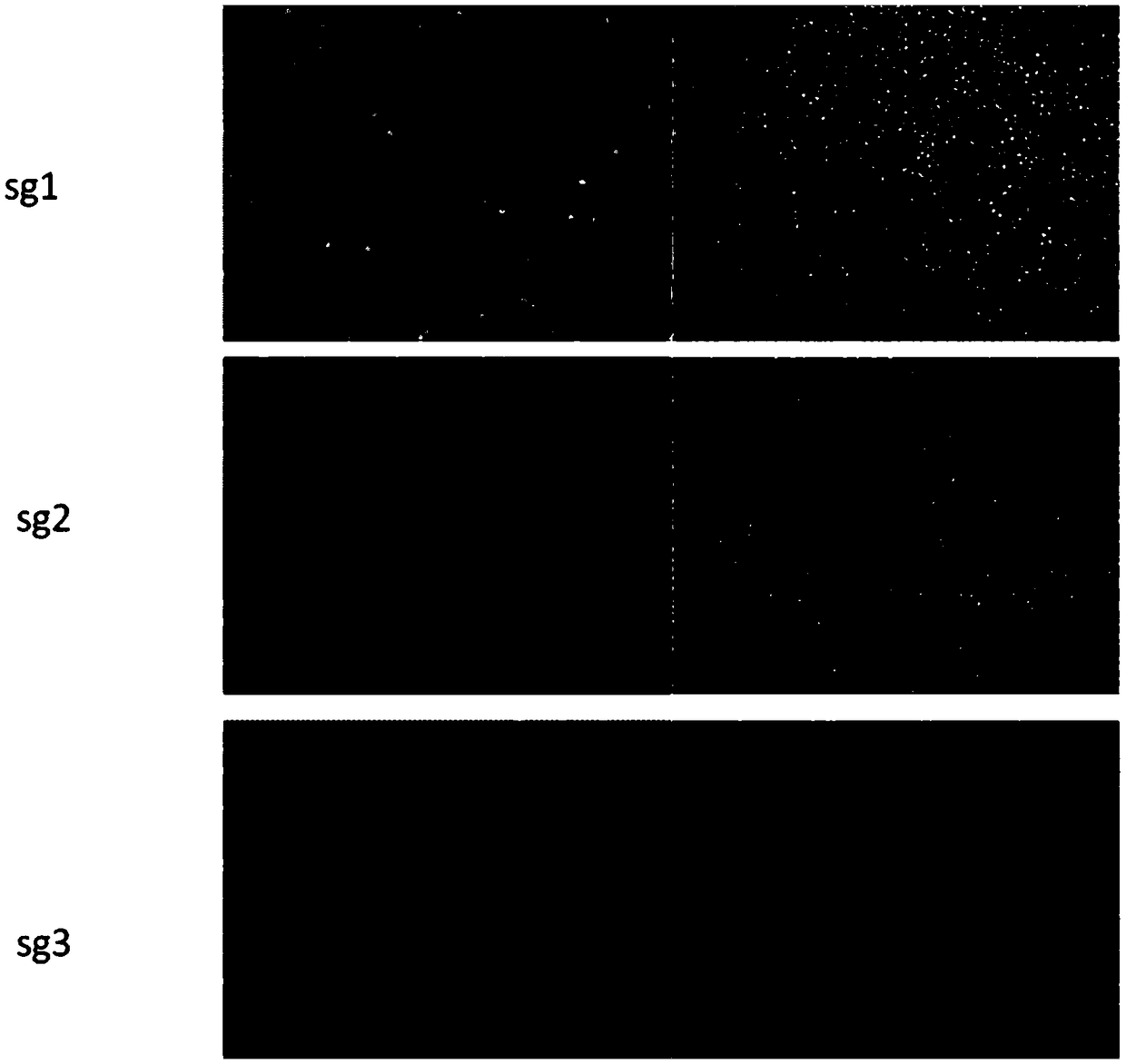Genetic engineering cell strain which is constructed on basis of CRISPR-Cas9 systems and is capable of secreting mouse interleukin-6
A technology of interleukin and genetic engineering, applied in the field of genetically engineered cell lines that can secrete mouse interleukin-6, can solve the problems of retroviruses not having precise editing ability and affecting cell functions, etc., and achieve cost reduction, Broad application prospects and high efficiency
- Summary
- Abstract
- Description
- Claims
- Application Information
AI Technical Summary
Problems solved by technology
Method used
Image
Examples
Embodiment 1
[0036] Example 1 Design and construction of a suitable site-directed cleavage vector
[0037] 1.1 Extract the original plasmid of the cutting vector
[0038] Using the plasmid mini-extraction kit (purchased from Kangwei Century, Cat. No. CW0511C), a small amount of the original plasmid of the cut vector (purchased from addgene, cat.
[0039] 1.2 Restriction cutting the vector original plasmid
[0040]Using an endonuclease (purchased from Neb, catalog number R0539L), the plasmid extracted in 1.1 was digested according to the experimental procedure of the product manual, and the digested product was recovered.
[0041] 1.3 Screening suitable sgRNA target sequence fragments
[0042] 1.3.1 Select sgRNA target sites.
[0043] According to the mouse ROSA26 genome sequence (NCBI Reference Sequence: NC_000072.6) given on the NCBI website, multiple target sites were selected for testing, and only three of the target sites were tested below. The sequence is as follows:
[0044] sg1...
Embodiment 2
[0063] Example 2 Construction of the donor vector with mouse interleukin-6 and antibiotic selection marker (puromycin)
[0064] 2.1 Extract the original plasmid of the donor vector
[0065] Using the plasmid mini-extraction kit (purchased from Kangwei Century, Cat. No. CW0511C), a small amount of the original plasmid of the donor vector (purchased from Addgene, Cat. No. plasmamid#37200) was extracted according to the experimental steps in the product manual.
[0066] 2.2 Digestion of the original plasmid of the donor vector
[0067] Using endonucleases (purchased from Neb, product numbers R3103S and R0146S), the plasmid extracted in 2.1 was double-digested according to the experimental procedure in the product manual, and the digested products were recovered.
[0068] 2.3 Cloning of mouse interleukin-6 protein coding region sequence
[0069] 2.3.1 Collect mouse SP2 / 0 cells;
[0070] 2.3.2 Use the Trizol method to extract mRNA;
[0071] 2.3.3 Using the mRNA Reverse Transcri...
Embodiment 3
[0095] Example 3 Electroporation of targeted cleavage vectors and donor vectors into mice and Sp2 / 0 myeloma cells
[0096] 3.1 Culture mouse SP2 / 0 myeloma cells
[0097] Resuscitate and culture mouse SP2 / 0 myeloma cells (purchased from ATCC, Cat. No. CRL-1581). See the table below for cell culture media.
[0098] Table 1 Components of Complete Medium for Mouse Myeloma Cells
[0099]
[0100]
[0101] 3.2 Setting the parameters of the electrorotator
[0102] The present invention adopts H1 new high-efficiency cell electrotransfection instrument (purchased from Suzhou Yida Biotechnology Co., Ltd.), and uses the following experimental parameters to conduct electrotransfection experiments.
[0103] Table 2 H1 electrorotor SP2 / 0 parameter list
[0104]
[0105] Note: The electroporation volume is 60ul, and 5 duplicate holes are set for each group.
[0106] 3.3 Electroporation of SP2 / 0 cells
[0107] 3.3.1 Cell count
[0108] Observe the cells under a microscope, col...
PUM
 Login to View More
Login to View More Abstract
Description
Claims
Application Information
 Login to View More
Login to View More - R&D
- Intellectual Property
- Life Sciences
- Materials
- Tech Scout
- Unparalleled Data Quality
- Higher Quality Content
- 60% Fewer Hallucinations
Browse by: Latest US Patents, China's latest patents, Technical Efficacy Thesaurus, Application Domain, Technology Topic, Popular Technical Reports.
© 2025 PatSnap. All rights reserved.Legal|Privacy policy|Modern Slavery Act Transparency Statement|Sitemap|About US| Contact US: help@patsnap.com



